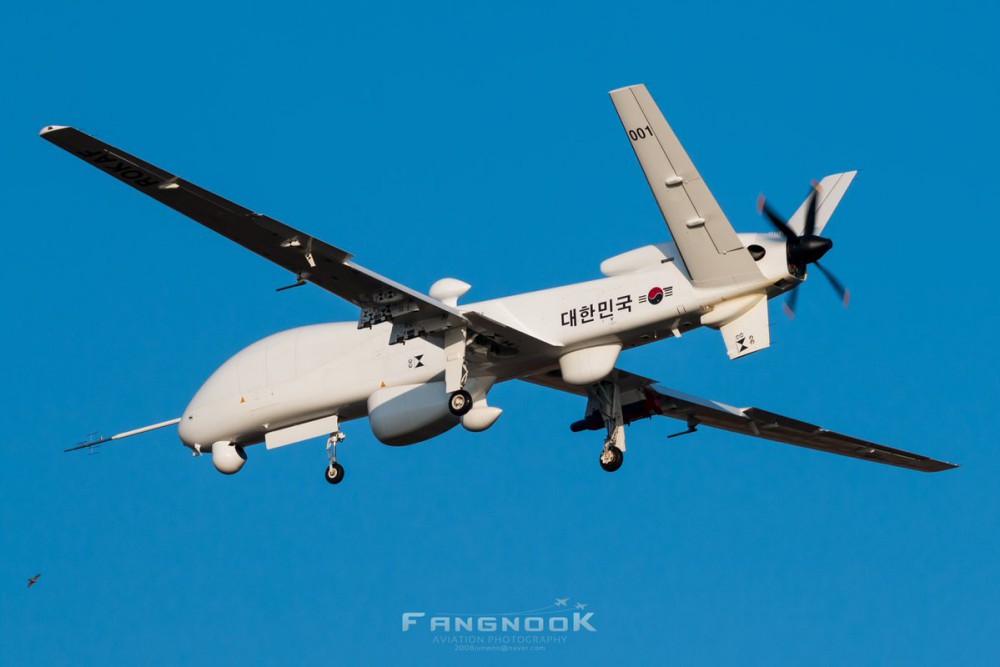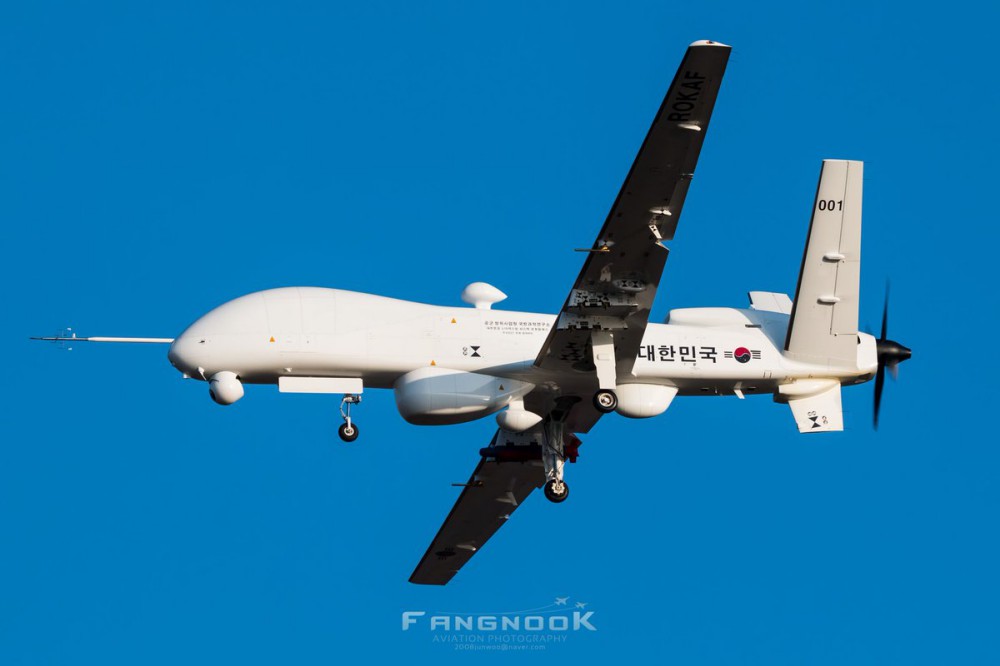A prototype of South Korea’s indigenously developed Korean Unmanned System (KUS)-FS medium-altitude long-endurance (MALE) unmanned aerial vehicle (UAV) has been revealed undergoing flight testing.
Built by Korean Air Aerospace Division (KAL-ASD) on behalf of the Korean Agency for Defense Development (ADD), the KUS-FS made its maiden flight in 2012.
Previously known as the Medium-Altitude UAV, the KUS-FS MALE UAV is being developed for the Republic of Korea Air Force (RoKAF) and is in the same class as the US-built General Atomics Aeronautical Systems Inc (GA-ASI) MQ-9 Reaper UAV. Unlike in Reaper, the KUS-FS’s main landing gear retracts inward into wings, rather than into the fuselage.
Onboard sensors include a chin-mounted electro-optical/infrared (EO/IR) sensor turret, satellite communications (SATCOM), and other sensors could include a synthetic aperture radar (SAR) and/or a ground-target moving indicator (GMTI) . The aircraft is equipped with four underwing hard-points.
Speaking to Jane’s at the recent Seoul International Aerospace and Defence Exhibition (ADEX), ADD officials noted that there has been no foreign involvement in the development of the KUS-FS, and that the physical resemblance to the GA-ASI Predator/Reaper is down to that being the optimum design for this class of UAV.
The KUS-FS is approximately 11 m in length, has a 25 m wingspan and is powered by a single 1,200hp engine. Jane’s has previously been told that the aircraft has a cruise speed of 169 kt, a range of 1,852 km, an endurance of 32 hours, and a service ceiling of 50,000 ft.
Roles earmarked for the KUS-FS include strike, communications relay, electronic warfare (EW), signals intelligence (SIGINT), as well as intelligence, surveillance, and reconnaissance (ISR). A single system will comprise three to five air vehicles, a ground control station (GCS) – capable of controlling multiple platforms – and ground support elements.
Sources: Aviation Analysis Wing; Jane’s 360


